What are the two restoring forces of waves and what kind/s of waves does each restore?
Surface Tension- Capillary Waves
Gravity- All waves
A rising tide is called the ____________
A falling tide is called the ____________
Rising Tide = Flood Tide
Falling Tide = Ebb Tide
Why is it possible to have negative tides?
Zero on a tide chart is the tidal datum, or the low astronomical mean water level, which serves as the zero point for measuring all other tide heights.
Where can the permanent thermocline be found?
Location and Ocean Layer
Open Ocean
Intermediate Layer
How do you spot a rip current?
How do you escape a rip current?
Look for an gap in the middle of breaking waves where waves are not breaking.
Swim to the side at a 90deg angle from the pull of the current.
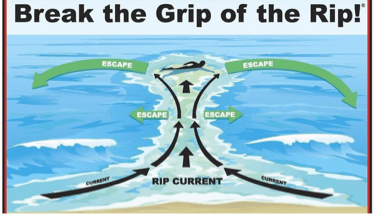
Fill in the blank:
Crests move particles ____________ and _____________, troughs move particles ____________ and _____________.
Particles move in _______________, energy continues ______________.
Crests move particles up and forwards, troughs move particles down and backwards.
Particles move in circles/orbits, energy continues forwards.
Why are the tides not at the same time everyday?
The moon advances a little in its own orbit every 24 hours so it will take a single point on Earth about 24 hours and 50 min to catch back up each cycle.
Draw a picture of a semidiurnal tide.
Where on Earth can I expect to find this kind of tide?
East Coast of North America, Europe, Africa
Where can seasonal thermoclines be found?
Geographic location AND Layer of Ocean.
Polar and temperate latitudes (not tropics)
Surface Layer
What is fetch?
Name the three other factors that contribute to wind wave formation AND explain how each makes more/larger waves.
Fetch: The length/width of water that wind can blow over to create waves.
Wind Speed: More speed = More energy transfer = More/Larger waves
Wind Duration: More duration = More energy transfer = More/Larger waves
Depth of Water: Shallow depth = More interaction with sea floor/friction = Waves more easily produced
Explain how a capillary wave forms and how a capillary wave can form into a swell.
Capillary Waves form from the transfer of energy between wind and the surface of the ocean through friction, they are smallest wind driven waves.
As wind gets stronger, Capillary waves get bigger forming wind waves (more friction = energy transferred)
Wind waves get bigger, it becomes easier for the wind to “grip” the water surface and form even larger waves (self feeding)
Larger and larger wind waves form and move away from the wind source that created them. When the waves (and their transfer of energy) persist independent of an active wind source they become swells.
Why are there two high tides each day.
What is the high tide called on the side of the earth closest to the moon?
What is the high tide called on the side of the earth furthest from the moon?
All points on earth will lie under the gravitational high tide and the centrifugal high tide once every 24 hours.
Closest to Moon: Gravitational High Tide
Farthest from Moon: Centrifugal High Tide
Draw a picture of a mixed semidiurnal tide. Where on Earth can I expect to see this kind of tide?
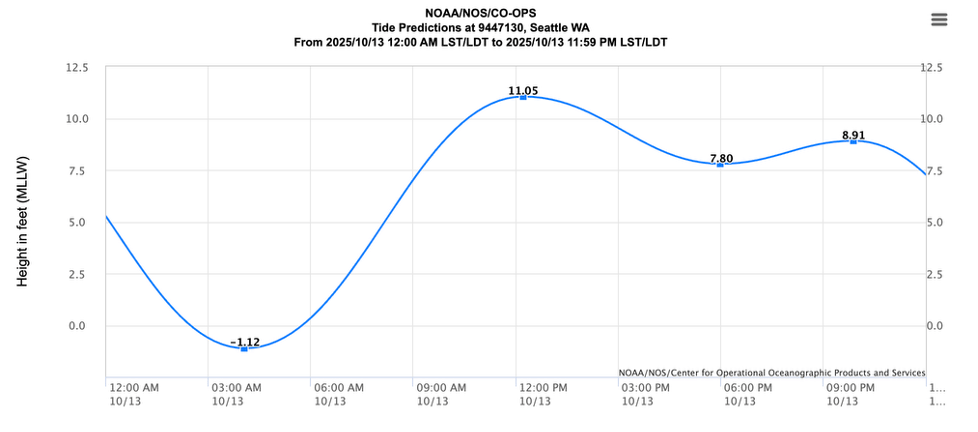
West Coast of North America!
Halocline: Change in ocean salinity with depth
Thermocline: Change in ocean temp with depth
Pycnocline: Change in ocean water density with depth
Explain why an earthquake has the potential to trigger a tsunami, but wind driven waves do not.
Earthquake moves the ocean floor up and down- also moves all the water sitting on it up and down too (VERY LARGE disturbance)
Water is disturbed from bottom up, not top down like in wind waves = MUCH MUCH more kinetic energy being transferred by the waves
Describe how and why waves break.

Describe the following for both Spring and Neap Tides:
What location are the Sun and Moon in relative to each other.
What stage/s of the moon cycle does each happen in.
What do the tides themselves look like.
Spring Tides: When the Sun and the Moon are lined up, their effects add together! Full and New Moons. Difference between lows and highs are large.
Neap Tides: When the Sun and the Moon are at right angles their effects cancel out. 1st and 3rd quarter moons (half moons). Difference between lows and highs are small.
You have landed your boat on shore after a 12 foot tide back in May. Unfortunately, you forgot to take your boat back out to sea with the receding tide. When is your next chance to take your boat back out to sea based on the tide chart.
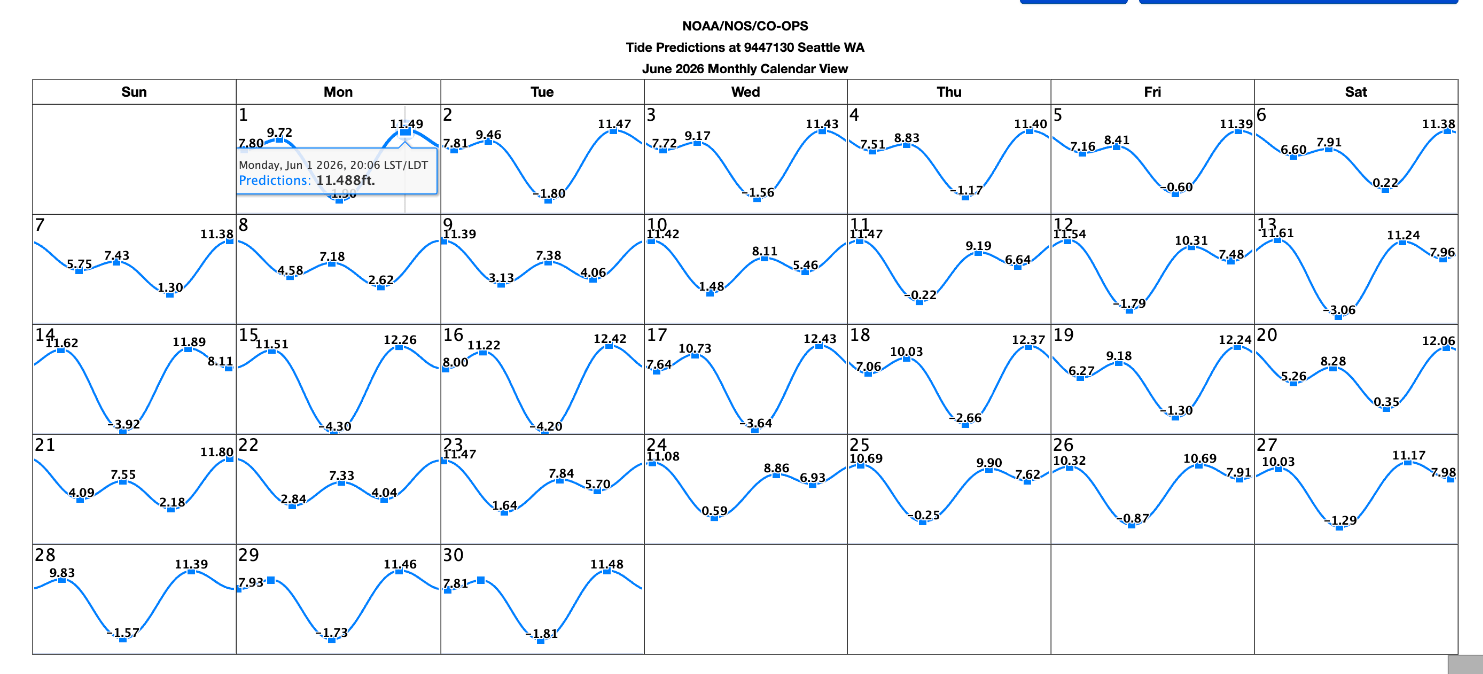
June 15th
Define overturn.
Describe the seasonal pattern of overturn seen in polar and temperate oceans.
•Overturn: The sinking and mixing of higher density surface water with less dense deeper water
Sun heats surface in summer, weather is calm (minimal wind/wave mixing)
Autumn brings colder weather (surface cools) and storms (mixing increases)
Winter brings further cooling and possible downwelling.
In longshore transport...
What is being transported?
In what pattern? Why does this happen?
Name two things that are produced as a result of longshore transport.
Longshore Transport
Waves do NOT typically encounter beach perpendicularly (usually at an angle). The force of water at an angle carries sediments down shore in a zig zag pattern
Build up of sediments can produce sand bars and rip currents.
Draw a continuous picture showing deep water wave formation, intermediate wave formation, and shallow water wave formation.
Pay attention to the shape and depth of your water particle orbits AND distance from crest to crest in each category.
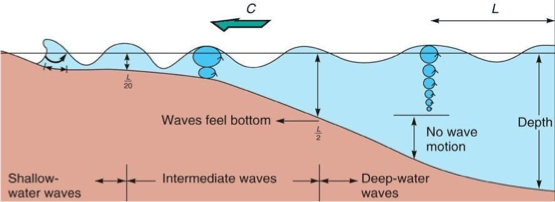
King tides, while not a scientific term, refer to the largest tides of the year. They are a type of spring tide. What specifically can influence the formation of king tides that does not always happen with every spring tide.
When the moon and the sun are in their closest locations to earth.
Daily Double if you included the terms: Perigee and Perihelion
You are trying to plan a lunchtime (noon) tide pool trip at low tide. Based on the tide chart below, which day is best for your trip.
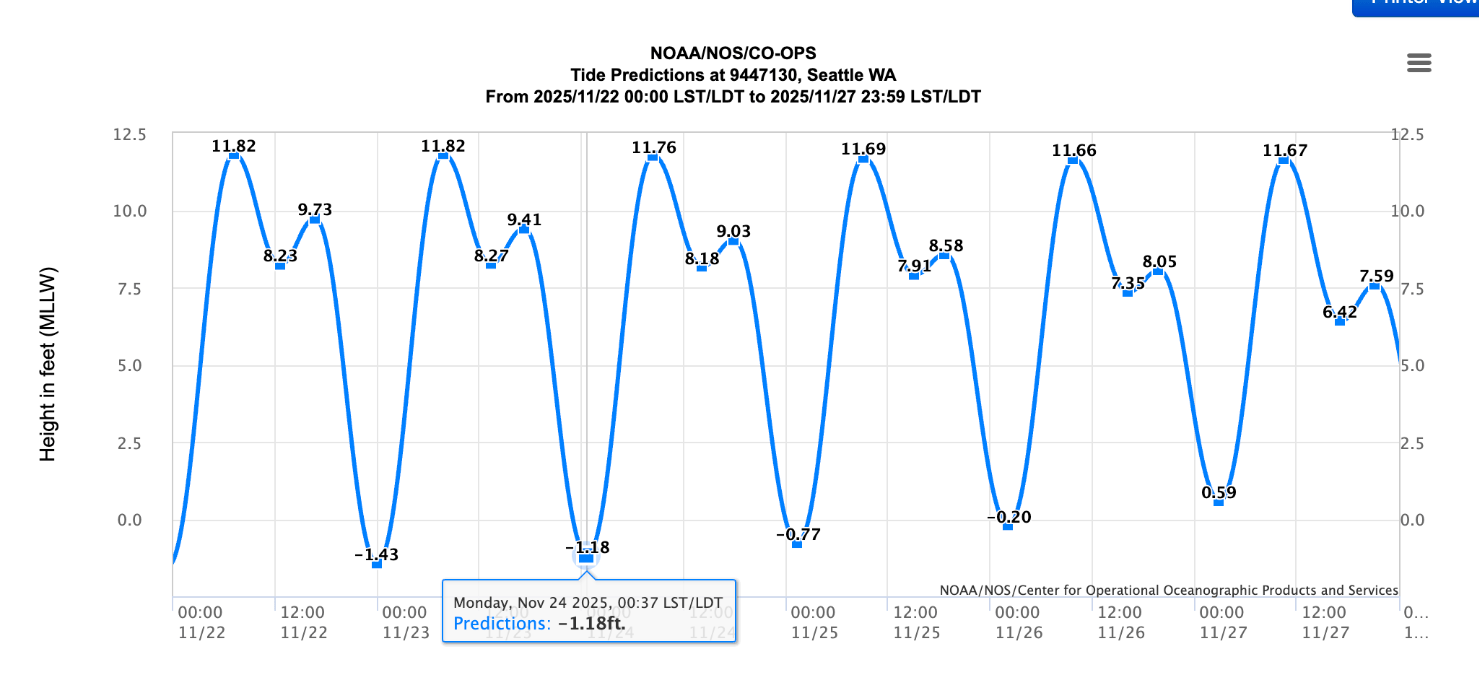
11/22 Lowtide at noon is 8.23
The 11/23 low tide is lower but doesn't happen until 1:30pm/13:30!
What is the main cause of the slowing of the AMOC (Atlantic Meridional Overturning Circulation) just south of Greenland?
What is supposed to happen in this region that drives the Great Ocean Conveyor.
Increased global temperatures are increasing meltwater from glaciers and making this region of ocean water less cold/less salty= less dense. Water doesn't sink like it should.
Water in this region is expected to be very cold. As ocean water particles freeze into pure water, they leave behind salt and this increases the salinity of the non-frozen ocean water. This cold salty water is very dense and sinks to the bottoms of the ocean powering the begining of the "pump"/movement/circulation of the Great Ocean Conveyor.
What are the predicted effects of a slowing/collapse of the Great Ocean Conveyor?
Major climate impacts (limited movement of warm air/water) causing extreme weather (droughts, ice age, lower temp lows and higher temp highs) and sea level rise (increased glacial melt)
